Lighting is an integral part of architectural design.It determines the utilitarian and the aesthetic environment provided by a designer, thus calling for the most careful planning and highest skills.
Contents:
- Accent lighting
- Task lighting
- Ambient lighting
- Wall washers
- Track lighting
- Downlighting
- Applications
Accent Lighting:
- Accent lighting is used to emphasize objects or areas at some lighting angle other than perpendicular to the floor.
- The accent light has a flexible lamp position.
- It can act as a decorative or highlighting device.
- The flexibility of focus of these types of light is an essential feature.
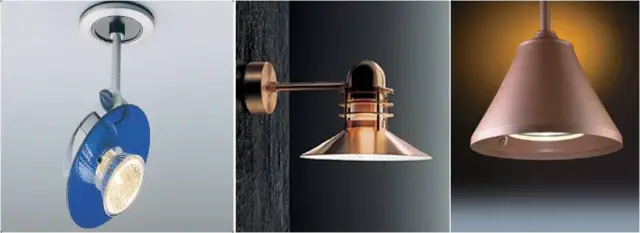
Accent lighting can be used for statues, paintings, moldings, graphics etc.
Eg:low voltage spot lights,truck lights,minispots,picture lights,uplighters etc.
Criteria For Accent Lighting:
- The luminaire should be capable of 358 degree of rotation.
- It should have minimum tilt of 35 degree.
- An accent light should accommodate colour filters and spread lenses and be able to hold both the filter and the lens at the same time.
- It should have adequate baffling to prevent direct sight of the lamp from normal viewing angles when the lamp is tilted.
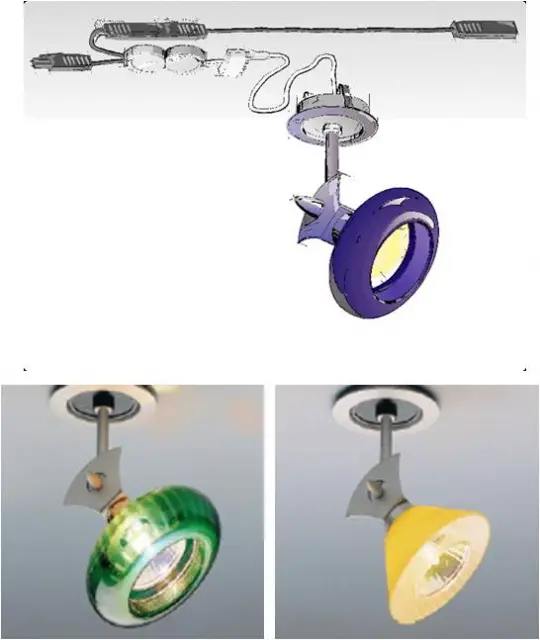
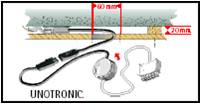
- The luminaire’s working components should be easily accessible from either below or above the ceiling line in order to adjust direction, change lamps, change colour filters and lenses, or change the orientation of light pattern produced by the lamp.
- It should be possible to lock all adjustable features in place once they have been focussed so that the light scheme is not altered.
- An accent light should accommodate a variety of lamp wattages and beam distributions without the need for external adaptors.
- Any accent light should be efficient, some direct most of their light inside the lamp housing when tilted more than 10 degrees.
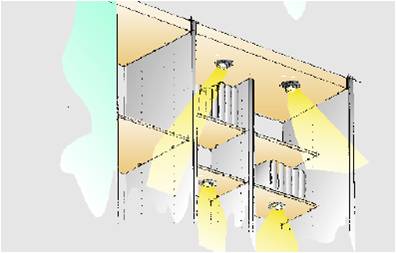
Task Lighting:
- Task lighting is mainly a light source which is designed specially to direct light on some task surface .
- In most applications, incandescent or flourescent light sources are typical.
- It aims to achieve the following:
- Increased productivity by visual comfort
- Decreased stress levels
- For better controlled and localised light
- Saves energy
- The light control in task lighting is accomplished by various methods,depending on whether the system uses fixed or flexibility mounted luminaires.
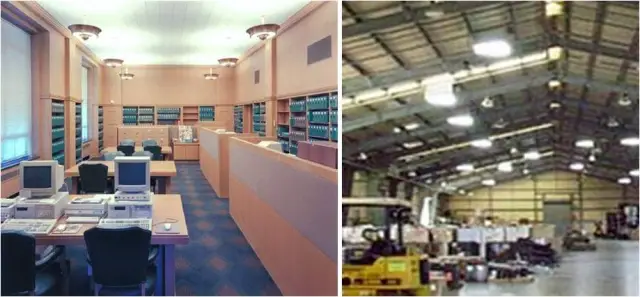
Criteria For Task Lighting:
- The lighting to be provided on the work, in addition to the building lighting, must be determined either by individual analysis of the visual tasks in terms of the critical details and critical contrasts inherient in these tasks.
- The table below gives a selection of generalised visual tasks with an indication of recommended levels of work lighting.
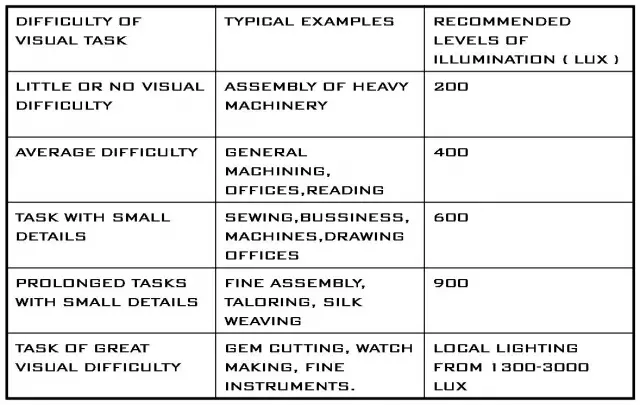
- The essential features of task lighting
- Tasks of great visual difficulty require levels of illumination which cannot be supplied either economically or without visual discomfort except by the provision of local lighting.
- Tasks of average or little visual difficulty can be performed in the levels of illumination recommended for the building lighting.
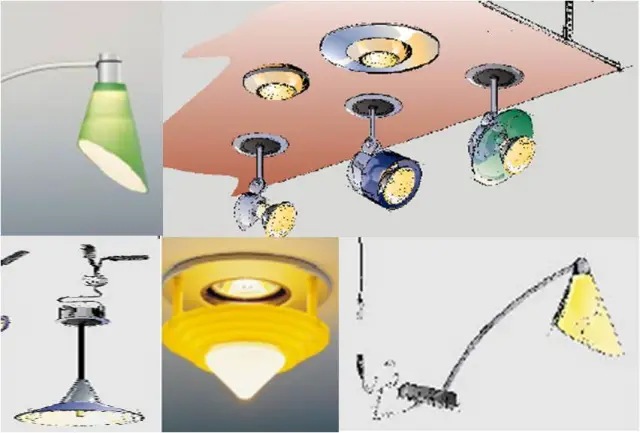
Ambient Lighting:
- It is a general lighting which is used to provide basic illuminance to different spaces.
- It helps to reduce contrast between bright light sources and their surroundings.
- It facilitates basic visibility for safe utilisation of space.
- It could be direct or indirect
- Eg:uplightrs,downlighters,grid lighting,strips,coves,fluroscent lighting etc.
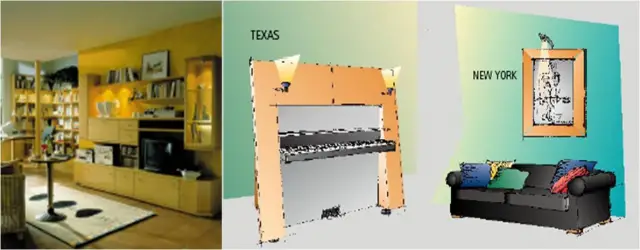
Criteria For Ambient Lighting:
- The ambient lighting systems should be able to withstand heavy abuse as they are mounted within the reach of the users.
- Well designed furniture integraterd lighting should be used as it is easy to maintain.
- Electric discharge lamps should be used as they last longer than incandescent sources and therefore require less frequent servicing.
- Total possible connected electric load predictions between 1.5 to 2.5 watts per sq. Ft is considered energy efficent.
- In offices with partitions or other high obstructions, annoying shadows should be avoided.
- Ceiling finishes should be diffuse and highly reflective ( 80-90% ) to compliment ambient lighting.
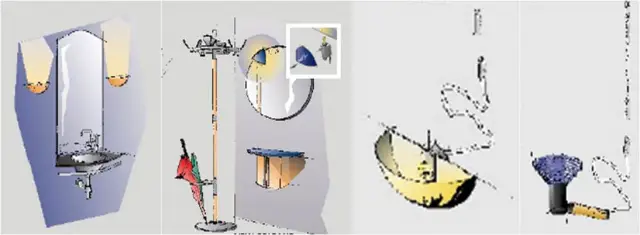
Ambient Lighting – Wall Washers:
Shadowless coverage wall washers:
- For each unit of distance from the vertical surface, liminaires must be located at an equal unit of distance from center to center.
- Wall washing also provides light for the horizontal surfaces near the subject wall.
- Specular surfaces cannot be wall washed by luminaires intended for shadowless illumination.
- Glossy surfaces will produce mirror images of the light source causing a veiling glare.
- Caution is necessary when directing wall washers at walls with windows and doors. Glare from wall washers may stun any one.
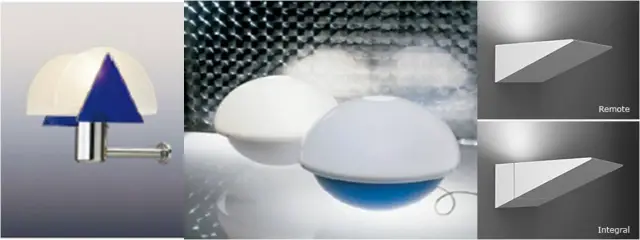
Criteria For Wall Washers:
Entering the room.
- Wall washers in a line down the center of the hall or in a line past the hall’s center will create a row of glare sources thus place the wal washers nearest a wall opening no closer than the recommended spacing dimensions between units.
Grazing coverage wall washers:
- Grazing wall washing is very dramatic but inefficent. While the luminaires in a shadowless system may consist of 150 watts lamps placed on 3 ft centers, the grazing systems may use 200 watts lamps on 1 ft centers.
- The principal task of grazing system is to highlight the top surfaces of walls irregularities. Therefore, the frontal surface of a painting projecting from the surface of a grazed wall will not be effectively illuminated.

Track Lighting:
- Track lighting is more a system of electrical distribution than a lighting technique.
- It is based on a continuosly available linear power source that also acts as an attachment and support system for various lamp holders.
- Track lighting is principally used for accent lighting.
- Its basic advantage is flexibility.
- The basis of the system is a linear raceway that can provide electrical power at any point.
- The housing for the raceway is usually extruded aluminium and maybe recessed, surface mounted or pendant hung.
- It can also act as the main grid runners of a suspended ceiling. By adjusting the track connector, some systems can provide an adittional 2 or 3 separate circuits.
- Following are the paths for track lighting:
- Starter track
- Joiner track
- Curved track
- Starter track

Downlighting:
- Incandescent downlights usually have a direct light distribution (most of the useful light is directed downward.
- Their inherent control of highlights develops the quality and character of shadow.
- General downlighting is frequently used as the total illumination for an area.

Criteria For Downlighting:
- It should have exposed surfaces with a pleasing and appropriate design.
- Down lights should virtually use all the light produced by the lamp effectively and efficiently.
- It should be adaptable to changes in intensity, colour and character of the light.
- It should have a controlled apparent brightness.
- Maintenance should be easy and it should be long lasting.
- Reflected glare and inappropriate harsh shadows on tasks must be minimised. This can be controlled if the units are placed on tight centres (close together), or if the light output is spread over a large area.
- If narrow distribution outputs are used, additional wall lighting and/or highly reflective vertical surfaces are advisable.
- Downlight luminaires placed too close to a wall create scallops of light on wall surfaces. If scallops are not desired as a decorative effect, luminaires should be placed at least half of the maximum spacing distance from the wall.

This presentation was created by: Ankita Gupta, Vineet Goyal, Akhilesh Maurya & Biswajit Behra

Leave a Reply
You must be logged in to post a comment.